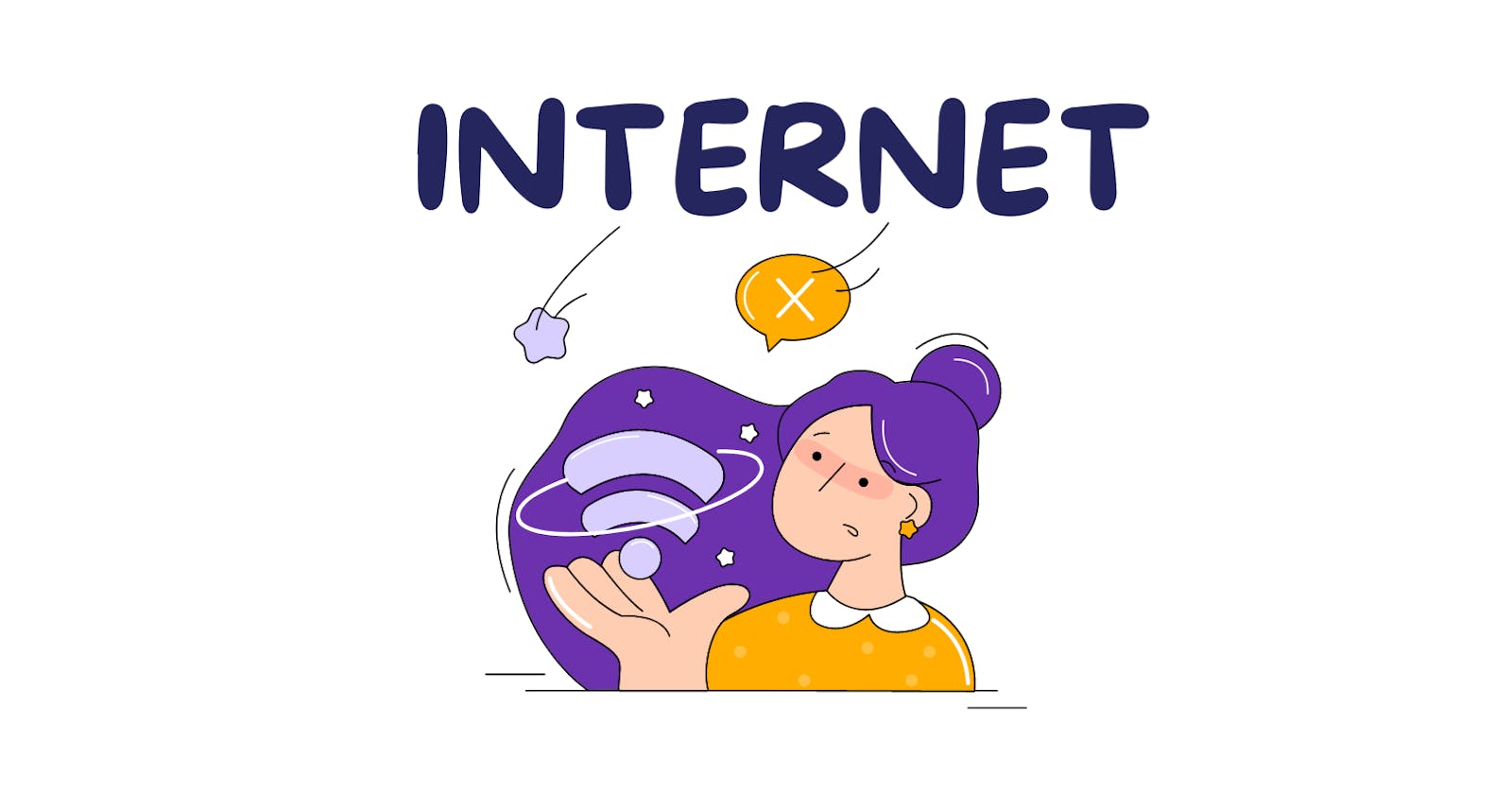The Internet is an extensive network of computers that communicate together
The Internet is a way to connect computers altogether and ensure that, whatever happens, they find a way to stay connected.
Simple Network
When two computers need to communicate, we have to link them, either physically (usually with an Ethernet cable) or wirelessly (for example, with Wi-Fi or Bluetooth systems). All modern computers can sustain any of those connections.

Such a network is not limited to two computers. We can connect as many computers as we wish. But it gets complicated quickly. If we are trying to connect, say, ten computers, we need 45 cables, with nine plugs per computer!

To solve this problem, each computer on a network is connected to a special tiny computer called a router. It makes sure that a message sent from a given computer arrives at the right destination computer. To send a message to computer B, computer A must send the message to the router, which in turn forwards the message to computer B and makes sure the message is not delivered to computer C.
Once we add a router to the system, our network of 10 computers only requires 10 cables: a single plug for each computer and a router with 10 plugs.

Network of networks
By connecting computers to routers, then routers to routers, we are able to scale infinitely.


Such a network comes very close to what we call the Internet
But there are other networks out there, and it's not really possible to set up cables between our house and the rest of the world, so to handle this, there are already cables linked to our house, for example, electric power and telephone. The telephone infrastructure already connects our house with anyone in the world, so it is the perfect wire we need. To connect our network to the telephone infrastructure, we need a special piece of equipment called a modem. This modem turns the information from our network into information manageable by the telephone infrastructure and vice versa.

The next step is to send the messages from our network to the network we want to reach. To do that, we will connect our network to an Internet Service Provider (ISP). An ISP is a company that manages some special routers that are all linked together and can also access other ISPs' routers. So the message from our network is carried through the network of ISP networks to the destination network. The Internet consists of this whole infrastructure of networks.

Finding Computers
If we want to send a message to a computer, we have to specify which one. Thus, any computer linked to a network has a unique address that identifies it, called an "IP address" (where IP stands for Internet Protocol). It's an address made of a series of four numbers separated by dots, for example: 192.168.2.10
To make things easier, we can alias an IP address with a human-readable name called a domain name. For example (at the time of writing; IP addresses can change) google.com is the domain name used on top of the IP address 142.250.190.78. So using the domain name is the easiest way for us to reach a computer over the Internet.

